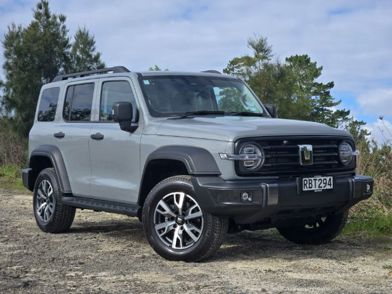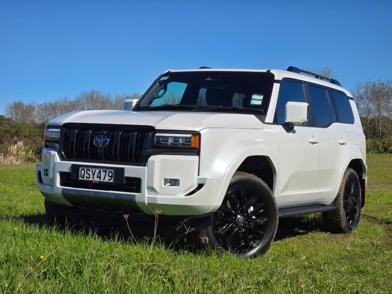With the arrival of the new CX-60, Mazda has shuffled its naming protocol at tad, dropping the traditional “Sport” nomenclature from the new SUVs line up and replacing it with “Homura”, which means “flame” or “blaze” in Japanese. It is also a species of grass moth found in Brazil, but I doubt that was Mazda’s inspiration.
Anyway, name aside, the Homura takes the traditional sportier position in the CX-60 line up and, as such, features a more handling-focussed suspension tune as well as Mazda’s new 3.3-litre inline six-cylinder engine.
Effectively the mid-spec model in the CX-60 family, the Homura is the only one available with a choice of either the 3.3 or the 2.5-litre four-cylinder plug-in hybrid powertrain. In CX-60 form, the 3.3-litre six pumps out 209kW and 450Nm, down on the hybrid’s 241kW/500Nm, and the same six in the larger Mazda CX-90 which produces 254kW/500Nm. It is hooked up to the same 8-speed automatic transmission and also nabs a 48-volt mild hybrid assist system.
Mazda claims a 3P-WLTP average fuel consumption figure of 8.2L/100km (and 190g/km of CO2) for the 3.3 and, in the real world, this isn’t actually far off - around town the Homura will average around 11 to 12L/100km, while getting it out on the open road for a bit sees this effortlessly drop into a single figure average.

Lacking the PHEV’s ability to run around on electric power only, the Homura is a more traditional SUV experience, with maximum torque kicking in at 2000 rpm punching it off the line with a satisfyingly solid shove.
Homura means “flame” or “blaze” in Japanese. It is also a species of grass moth found in Brazil, but I doubt that was Mazda’s inspiration.
That maximum torque has a somewhat narrow band, only stretching to 3500 rpm, but it never feels lacking in the upper revs as the maximum power kicks in at 5000 rpm and takes the baton nicely, with the six producing a muted, but pleasingly muscular growl throughout.
The Homura’s sportier suspension tune presents a slightly firmer ride than the Takami and noticeably less body roll, sharpening the handling up nicely without sacrificing ride quality to any particular degree, meaning it remains a superbly comfortable SUV.
Inside, the Homura eschews the Takami’s showy white trim for a traditional Kiwi favourite black leather-trimmed interior. It features the same layout, which also means the same annoyingly imprecise wireless phone charging pad that constantly quits and restarts…
The Homura also shares the slight drivetrain shunt at light throttle applications that the PHEV suffers from, but it is far less noticeable here thanks to not having an electric motor to complicate things.

While it is even more minor here, it is still a disappointment, as everything else about the Homura is refined and polished to a remarkably high degree. The transmission is otherwise excellent too, slipping through gears with impressive smoothness at full throttle, only becoming slightly niggly on light throttle.
Lacking the PHEV’s ability to run around on electric power only, the Homura is a more traditional SUV experience.
Still, for most people this is likely easy to overlook, leaving the Homura an excellent medium SUV with mild sporty pretensions that it pulls off nicely, without negatively affecting its luxury credentials. It is nicely comfortable, superbly appointed and even offers up a pleasing six-cylinder growl.
How much is the Mazda CX-60 Homura?
If you were expecting CX-5 pricing, then you are in for a shock, as Mazda is definitely aiming higher at the proper luxury market with the CX-60, which means the mid-spec Homura costs $81,990. It also currently attracts a $2875 Clean Car fee.
What are the key statistics for the Mazda CX-60 Homura's engine?
It's a 3.3-litre petrol inline six-cylinder with a 48-volt mild hybrid assist system.
Is the Mazda CX-60 Homura fuel efficient?
For a medium-verging-on-large luxury SUV with a powerful six-cylinder engine, yes, it is. Mazda claims a 3P-WLTP average of 8.2l/100km which is actually easily achievable with a mix of urban and open road driving.
Is the Mazda CX-60 Homura good to drive?
Absolutely, in fact it is at its best out on the open road where it offers up a blend of pleasing dynamics and comfort, with everything working together nicely. Lower speeds around town, however, are its weak spot, with the transmission becoming a tad fussy.
Is the Mazda CX-60 Homura practical for a medium SUV?
While it is technically a medium SUV, it is certainly at the larger end of that spectrum, so offers up plenty of room, with plenty of rear seat leg room and a 570 litre boot.
What do we like about the Mazda CX-60 Homura?
It looks fantastic, with a strongly European vibe to its styling (and more than a few hints of Jaguar F-Pace, if we are being brutally honest) and has a massively high quality interior. It is roomy and comfortable, while the six-cylinder engine is refined and surprisingly economical for a big six.
What don't we like about the Mazda CX-60 Homura?
The transmission still brings an irritating hint of driveline shunt at slow speeds, which is the biggest flaw. The wireless phone charging pad is infuriatingly finicky, while the infotainment system is fiddly and unintuitive.













